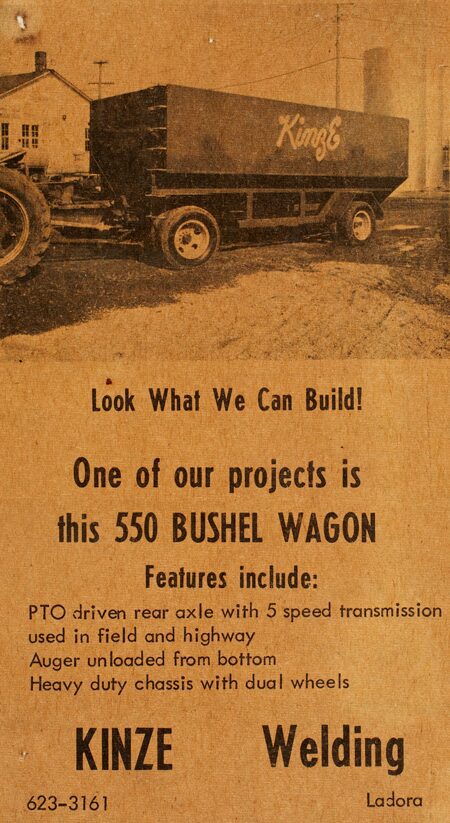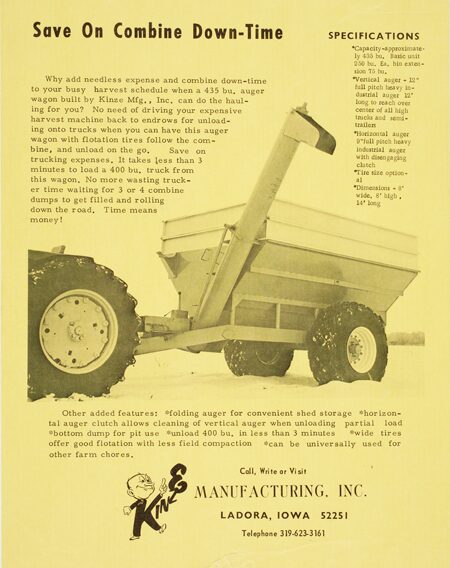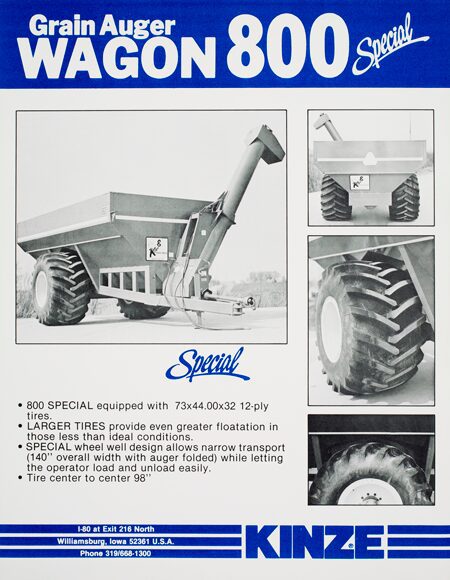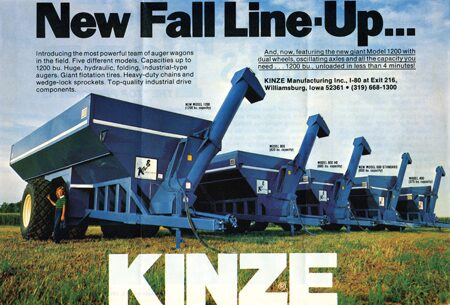“Look What We Can Build”

In the early days, Kinze built its reputation on custom-built equipment for local farmers in the Williamsburg area. This local Williamsburg newspaper ad (pictured below) for Kinze Welding (1966) featured a custom-built 550-bushel grain and heralded the first-ever auger-unloading model. It was designed with two axles with dual wheels and a PTO-driven 5-speed transmission on the rear axle for field/highway travel, and it unloaded grain at the bottom of the cart. It was the precursor to the Kinze Auger Wagon*, which ultimately revolutionized the grain-handling process during harvest.
Kinze First Grain Cart Brochure and Product Sheet
In 1971, this old black and white piece of literature introduced a whole new grain handling concept – a low-profile design that came with a pair of giant high-floatation wheels on a single axle; plus a folding auger capable of unloading 400-bushels of grain into a waiting grain truck in three minutes or less. This design quickly caught on as a much more efficient and cost effective way to keep the combine running for increased productivity.
Two years later, a 2-color product sheet introduced the 800 Special with oversized tires (73 x 44.00 x 32) to improve flotation in poor field conditions.


Kinze Grain Cart Advertisement
Ten years later (1981), Kinze used this half-page 4-color advertisement to introduce a complete lineup of Kinze grain carts, available in four different capacities–1200-, 800-, 600- and 400-bushels.

Looking back at these advertisements reminds us how far Kinze has come as a company. What hasn’t changed is our emphasis on quality and innovation that give farmers a real productivity advantage in the field. Some five decades later that’s still what we’re all about.
* Kinze grain carts were originally called “giant auger wagons”, to differentiate them from the small trailered gravity wagons commonly used at that time.
